It was quite an eventful weekend in London, and the excitement started before we even left Madrid. Sheldon (one of my roommates) and I made the classic mistake of assuming that everything would go right on our way to Barajas Airport in Madrid. Well, Murphy’s Law was in full effect that Thursday morning, and it nearly got the best of us. We took the metro to the train station to catch the train going to Barajas, but we came to find that they arrive every half hour, and one departed minutes after we arrived. So we were already going to be a half hour behind schedule. After the train finally came, we discovered that it was going to take us to terminal 4, when we needed to get to terminal 1. After a shuttle bus ride (yes, Barajas is huge), we finally got to the airport around 10:30, or ten minutes after boarding for our flight was supposed to close, and we still had to go through security and find our terminal. I was sure we were going to either miss our flight, or have to pay twice as much to catch a later one. We channeled our inner Ronoldo and made a mad dash to the terminal. But fortunately for us, we were flying RyanAir. I realize those words may have never been spoken before, but it was truly a blessing this day because per usual, they were well behind and it turned out that we were actually a half hour early! I now think my dad is less crazy for always aiming to arrive at our terminal two hours ahead of time.

- English pie
Now onto London. I absolutely loved the city, from the quaint old-English vibe in some
areas, to the energetic Piccadilly Circus, to the seemingly unlimited history that it plays host to. I didn’t even get to see the English countryside, but I’m sure that would have been beautiful as well. After taking a train to the city center from Stansted Airport, we stopped at a pub where I tried “pie” and a British beer called London Pride. Both were phenomenal. We then checked in and got situated in our hostels, and met in Piccadilly–the city center–to do a pub-crawl. The pub-crawl wasn’t anything special, they tend to be a bit of a swindle, but we still had a good time seeing some of the London nightlife.
Friday, our second day, began with a walking tour of the city led by an American expat from California with a pretty cool story. She had visited a friend in London for a month during high school and fell in love with the city. She didn’t have plans to attend college, but her parents insisted that she go, so she told them she wanted to go to London to study British history. So, naturally, her parents sold their house so she could go; your move, mom and dad. She's now married and still living in London, doing what she loves: sharing history in a fun, interactive way. We began the tour walking through Green Park, which
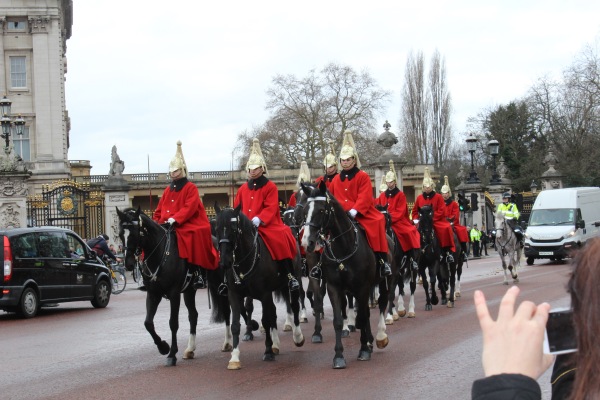
- Ceremony in front of Buckingham Palace
led to Buckingham Palace, where we watched the changing of the guards ceremony.
I was surprised by how unassuming the palace is, but then our guide told us a story that explained it. There was a king (I believe it was King George III) who was advised to move from his home to a more royal palace, but as he was rather modest, he required that the palace not be showy or pretentious. Interestingly enough, his wish has been obeyed all of these years, even after opportunities for renovation, such as after the destruction of World War II. We then proceeded to St. James’s Palace, and watched another smaller guard procession. Next was the courtyard of Whitehall Palace, a once-sprawling palace that was almost entirely burned down in a fire. The house of the Prime Minister, at 10 Downing Street, was also nearby Whitehall. We then went to Trafalgar Square, and finally ended up at Westminster Abbey, where we also saw Big Ben. Before bidding farewell to our guide, we got some great recommendations for fish and chips, Indian food, and some other spots in London. A man on the tour also told us that we could go to the entrance of Westminster Abbey at five o’clock to watch the church service.

After breaking off from the group, we decided to try the fish and chips restaurant recommended by our guide, which was called Poppie’s. Located near Camden Market, Poppie’s is loaded with vintage decor that reminds me of Portillo's, minus the Italian beef and heavenly chocolate cake, but it does have fantastic fish and chips. I knew it would be some sort of fish with fries, but it’s basically battered and fried cod. That being said, it was still marvelous. With full stomachs and tired legs, we returned the Whitehall Palace area to tour the War Cabinet Rooms. This is the underground living and meeting quarters where Winston Churchill and his war cabinet met during World War II to deliberate and strategize against the Nazis. After the war had ended, the men, who were rather fed up with working in a large cellar for months, basically up and left. This means that much of the area, especially their principal meeting room, is still intact. It's a fascinating time capsule into one of the most important periods in history. In addition to the Map Room and other living quarters, the museum includes a Churchill exhibit, detailing the former Prime Minister’s life and accomplishments.

After forcing ourselves to leave the War Cabinet Rooms, we narrowly made it to Westminster Abbey by five o’clock for the church service (yes mom, you read that correctly). As cheesy as it sounds, the only word that I think adequately describes the service is magical. The architecture of the cathedral was captivating enough, with the vaulted ceilings towering over us all, and the intricately ornate golden altar area. But the choir was unbelievable, their voices filling every square foot of the massive building, making me feel as if I were at a mass during the Middle Ages. The mass lasted only about forty five minutes, although I could have stayed for hours, and I as I left, I found myself glancing back at the front of the church about ten times, trying to imprint the image in my mind. Unfortunately, photography was not allowed, so the photo posted here is not mine (credit to National Geographic), but it conveys the beauty of Westminster Abbey nonetheless. Finally, we toured the National Gallery, with its seemingly limitless supply of paintings. Many people there were sitting on the couches in the galleries, sketching, writing, and reading, and I agree that it has to be one of
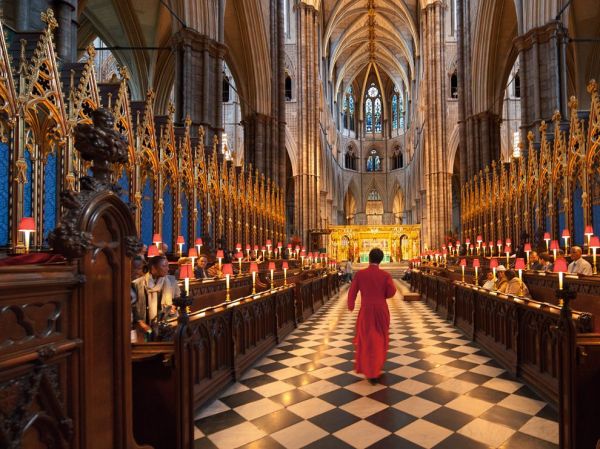
- Westminster Abbey
the best places to channel creativity. I might have to loiter around the Prado soon to try it out for myself.
The following morning we paid a visit to Burough Market, an outdoor food market comparable to a farmer’s market, where it’s possible to fill yourself on samples of anything from local cheeses to every sweet you can imagine. I also tried sidra, a type of cider beer more bitter and stronger than something like Redd’s Apple Ale, that is very popular in the north of Spain, and which has quickly become one of my favorite drinks. Be warned, however, because one could easily spend the better part of a day walking around Burough Market. The rest of the day was pretty tame, including a visit to King's Cross Station at platform 9 3/4 (the Harry Potter station), and some more walking around Piccadilly. However, that night we met one of our hostel roommates, a mid-twenties girl from Argentina doing an au pair for a family in the Netherlands. I was able to speak some Spanish with her, during which I had my first personal experience with the danger that lurks in the difference between Spain Spanish and Latin American Spanish. After she asked Sheldon and I, “¿Cuándo vuelven a Madrid?”, I replied, “Vamos a coger un vuelo mañana por la mañana.” For anyone interested, a quick Google search will show you why the verb “coger” doesn’t work in Latin America. I’ve known about this for quite a while, but it still slipped, so when she burst out in laughter, I realized the mistake I had made. Mistakes like these are part of the fun of learning the language, however. They can be seen as setbacks and frustrate a learner, but I prefer to have fun with them and use them to move forward. At times, I truly feel like a child again, having no idea how to say something that is taken for granted in my mother tongue, butchering a phrase, or as in this case, accidentally saying something profane while trying to say something so innocuous. But this is the beauty of living in a foreign country and learning a new language. Failure finds you time and time again, on many different fronts, but it forces you to change the way you view challenges, as opportunities rather than obstacles, and ultimately to grow. But anyway, we shared a good laugh over my error, then got dinner, and now I have a contact in the Netherlands!
I’ll end this post with my latest cool find in Madrid: an international bookstore called Desperate Literature, located just north of Opera in the city center. This small, cozy shop is owned by a couple of expats, a woman from France and a man who I believe comes from Ireland. They specialize in fictional literature in the English language, but have a great selection of all kinds of books in multiple languages. They buy books new and used, but exercise strict discretion when buying used, which I appreciate because all books are high quality. Minutes after walking in, Charlotte, the Frenchwoman, kindly offered me mint tea to complement my book searching. Terry, the Irishman, was decked out in carpenter garb, building something in the back of the store that also doubles as their home. I also fiddled around on a guitar that was lying around the shop, the first time I’ve played in over a month. I really regret not bringing mine. Several of the books have a paper band wrapped around their covers, on which is written a personal description of the book by the owners; this is just the type of thing I love about independently owned bookstores. I ended up buying On the Road by Jack Kerouac, which I felt was appropriate considering I’m having my own adventure, and a book called The Artist’s Way, which Tim Ferriss has recommended on his blog and caught my eye as soon as I walked in. And it just so happened that On the Road was on the “Booze Shelf”, meaning it came with a free shot of whiskey upon purchase. Note: I wanted to buy this book, liquor or no liquor, but I won’t say that the free shot didn’t aid my decision. So I got to try Charlotte and Terry’s homemade Fireball, a fantastic concoction and very appropriate for what was a cold, breezy day in Madrid. Needless to say, this is a place I look forward to returning to often during my time here.
I’m going to leave it here for now. If there are any things that I’m not writing about that you’d like to hear about, please let me know. In the future, I plan on writing about my impressions of Spanish culture, about Spanish cuisine, and more on my experiences using and learning the language in-country. If anything else trips your trigger, just send me a message. Even if you think I’m doing a good job, or really don’t care what I write about, still feel free to send me a message. Keeping in touch with people has been really enjoyable, and I love seeing what everyone is up to.
Have a great week, everyone!
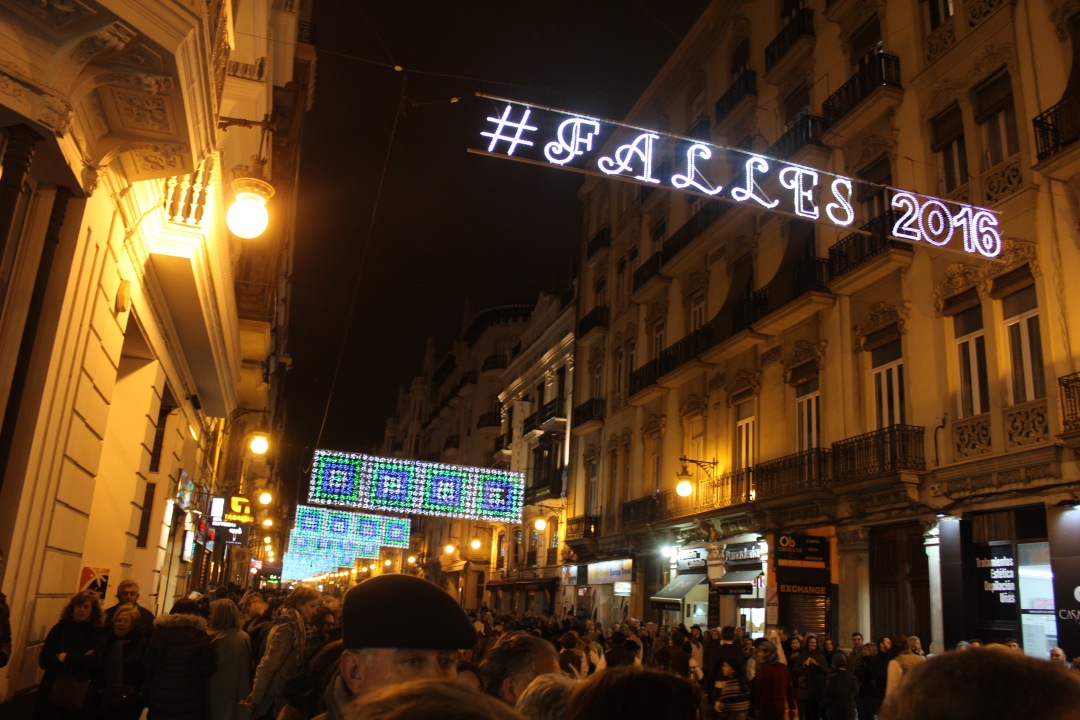
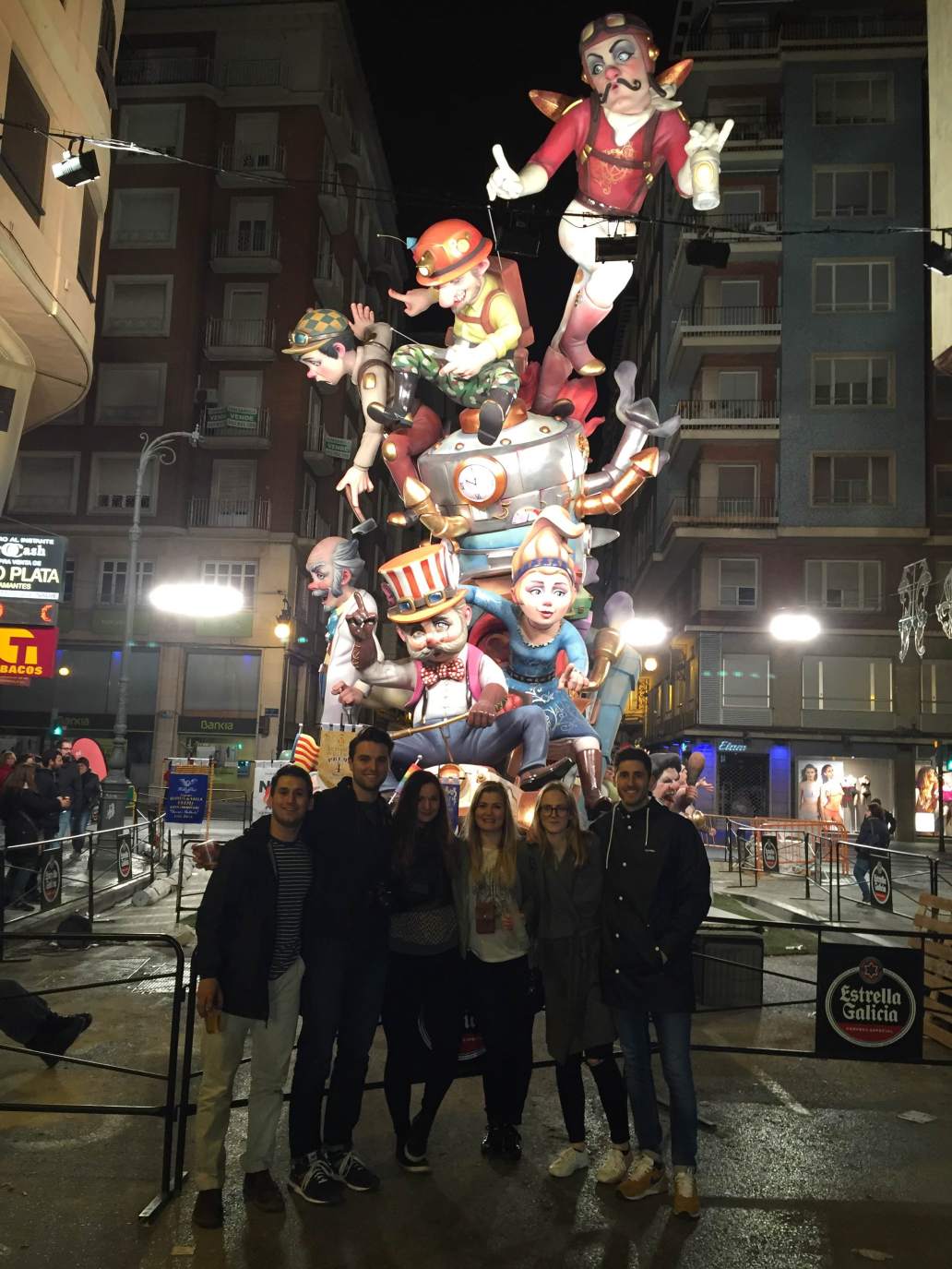


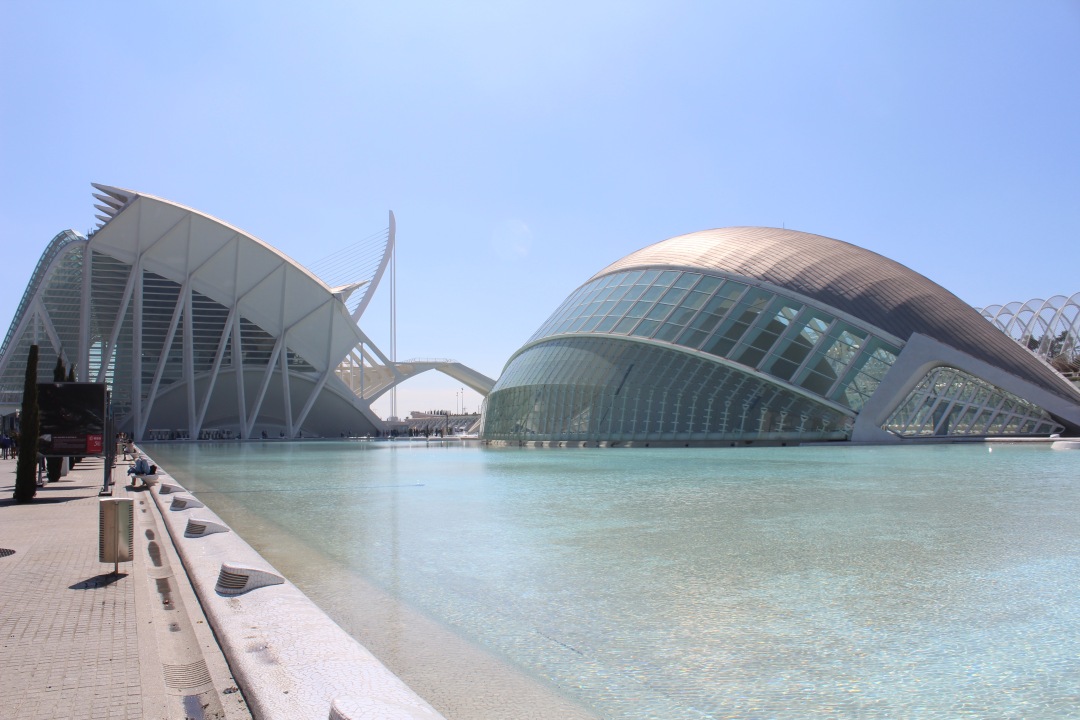



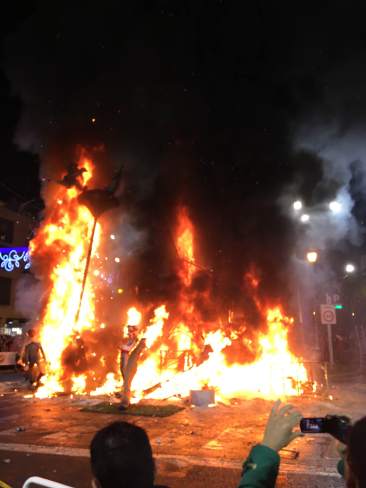





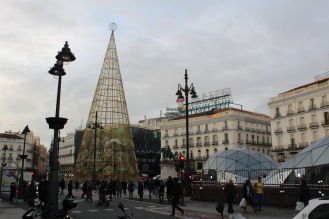


 Upon arriving to Segovia, the first thing we saw was, you guessed it, the Roman aqueducts. They were quite impressive, especially considering the structure is held together without any sort of adhesion, and instead uses equilibrium to stay erect. Our guide also told us a cool legend about how the aqueduct was made. Supposedly there was a girl whose job was to carry buckets of water back and forth to the ancient city for several hours at a time. One day, the Devil appeared and offered to build her the aqueduct in exchange for her soul. The girl agreed, but on one condition: it must be completed within a day. The devil concurred, after which the young girl prayed to the Virgin Mary that the day be shortened by five minutes. Ever the procrastinator, the Devil was just a few blocks short when the day ended prematurely.
Upon arriving to Segovia, the first thing we saw was, you guessed it, the Roman aqueducts. They were quite impressive, especially considering the structure is held together without any sort of adhesion, and instead uses equilibrium to stay erect. Our guide also told us a cool legend about how the aqueduct was made. Supposedly there was a girl whose job was to carry buckets of water back and forth to the ancient city for several hours at a time. One day, the Devil appeared and offered to build her the aqueduct in exchange for her soul. The girl agreed, but on one condition: it must be completed within a day. The devil concurred, after which the young girl prayed to the Virgin Mary that the day be shortened by five minutes. Ever the procrastinator, the Devil was just a few blocks short when the day ended prematurely.




